March itinerary in Japan Day 4 (Hiroshima, Okayama)
(Friday, March 25)
Table of contents
3. Hosenji Temple, Myorenji Temple, Nunakuma Shrine, Ankokuji Temple
4. Masuya Seiemon House, Ryoma’s hidden room
6. Bandaiji Temple, Abuto Kannon
10. Ohara Museum of Art, Shin-Kojima-Kan (provisional name)
11. Walk around Kurashiki Bikan Historical Quarter
12. Former Ohara’s house, Yurinso
1. Stone light house
I went to Tomonoura by bus from Fukuyama Station on the morning of March 25. The buses I used are as follows.
Depart Fukuyama Station at 8:20, Tomo Railway Bus “bound for Tomo Port”, arrive at Tomonoura at 8:50, fare Yen 530
I got off at Tomonoura bus stop, but if you want to start walking around the all‐night light stone lantern, it is more convenient to get off at Tomo Port bus stop, which is the end point. The Tomonoura Tourist Information Center is just off the Tomonoura bus stop. You should get off at Tomonoura bus stop to collect tourist information.
Tomonoura is an old town that has been a village since ancient times, with eight songs about Tomonoura in the Manyoshu (759). It is also the place where Takauji Ashikaga was given a decree by Ex-emperor Kogon in Tomonoura on his way to Kyoto.
Yoshiaki Ashikaga, the 15th shogun of the Muromachi Shogunate, who was exiled from Kyoto by Nobunaga Oda, moved to Tomo in 1576 with other samurai families of the Shogunate. It was called “Tomo Shogunate”.
For this reason, the historian Rai Sanyo at the end of the Tokugawa shogunate likened that “Ashikaga (Muromachi Shogunate) was born in Tomo and perished in Tomo.” In addition, it was a town that prospered during the Edo period as a “port for waiting for the tide.”
Tomonoura has been selected as a “National Preservation Districts for Groups of Traditional Buildings” as a “Tomocho Traditional Buildings Preservation District in Fukuyama City”. Also, at “Ponyo” released in 2008, director Hayao Miyazaki stayed for two months and became famous as a place where he devised a plan of “Ponyo”.
The stone light house is a symbol of Tomonoura. Built in 1859. The stone light house is over 10m in size and is the tallest stone light house in Japan as a port stone light house.
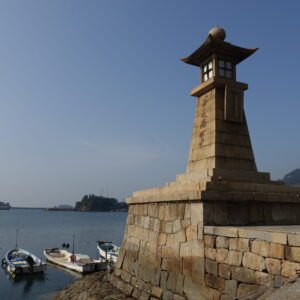
In addition, Tomonoura is the only ports in Japan to keep the port facilities of the Edo period (19th century) such as stone steps for landing goods in high or low tide, a sea wall, a shipping watch-house and an area for repairing ships.
“Irohamaru Exhibition Hall” is right next to the stone light house. “Iroha Maru Exhibition Hall” is a museum that displays relics, photographs, and illustrations related to the collision between “Iroha Maru” and “Meiko Maru” (owned by the Kishu Domain) that occurred off the coast of Tomo on May 26, 1867. The museum is open only on Saturdays, Sundays, and holidays for the time being. Unfortunately I couldn’t see inside because I was visiting on Friday.
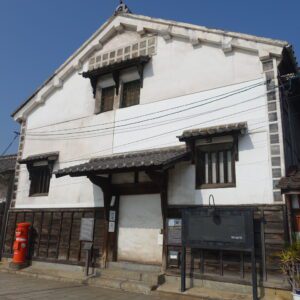
Admission fee: Yen 200 for elementary school students and above
2. Ota family residence
The “Ota Family Residence” near the stone light house and Irohamaru Exhibition Hall is a former “Homei-shu” liquor store. It is designated as a national important cultural property because it is a well-preserved sake brewery, a merchant house in the Edo period that represents the Seto Inland Sea.
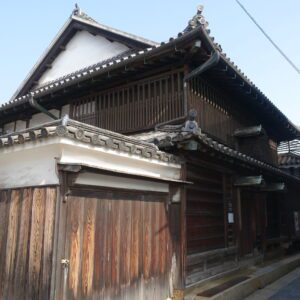
The “Ota Family Residence” was used as a place to stay when seven courtiers, including Sanjo Sanetomi when they ran away to Choshu in 1863 and when they came back to Kyoto in 1864. They were the Sonno Joi faction (those who advocated reverence for the Emperor and expulsion of foreigners).
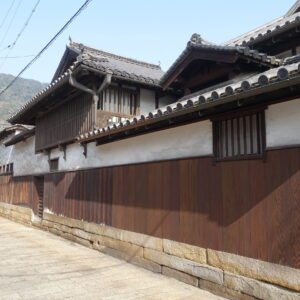
“Ota Family Residence” is open only on Saturdays, Sundays, and holidays for the time being. Unfortunately I couldn’t see inside because I was visiting on Friday.
Admission fee: Yen 400 for junior high school students and above, Yen 200 for elementary school students
The “Homei-shu” liquor store “Tomo Sake Brewery Co., Ltd.” still operates in a place slightly away from “Ota Family Residence”. It was a wonderful house with a personality. There are several sake breweries in Tomonoura that make “Homei-shu”.
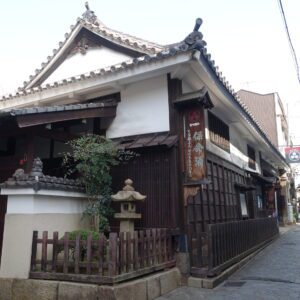


3. Hosenji Temple, Myorenji Temple, Nunakuma Shrine, Ankokuji Temple
There are many shrines and temples in Tomonoura. The existence of many of these shrines and temples proves the prosperity of Tomonoura until the Edo period.
On the way from the “Homei-shu” liquor store to Nunakuma Shrine, there is Hosenji Temple. It’s about a 5-minute walk from the “Homei-shu” liquor store.
Hosenji Temple started in 1358 when Daikaku, a high priest of the Nichiren sect, built Hokado. During the Edo period, it was also a lodging facility for the Joseon missions to Japan. At the time of my visit, the plum blossoms were in full bloom.
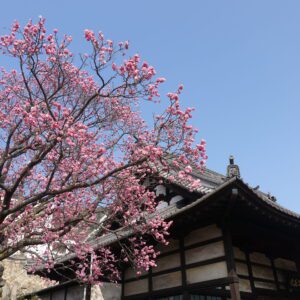
Just ahead of Hosenji Temple, there is the burial mound for severed heads of Shikanosuke (Yukimori) Yamanaka, and next to it is Myorenji Temple. Myorenji Temple is said to have been built during the Keicho era (1596-1614). Like the Hosenji Temple, it was also a lodging facility for the Joseon missions to Japan.

Nunakuma Shrine was renamed “Nunakuma Shrine” by enshrining Watasu Shrine and Tomogi-Ongu in the Meiji era. According to the shrine, regarding the construction of Watasu Shrine, when Empress Jingu headed to Saigoku in 193 AD, he worshiped Watatsumi on the local spirit stone and prayed for the safety of the sea route. On the other hand, the origin of Tomogi-Ongu is unknown. Tomogi-Ongu is said to be the head office of Yasaka Shrine in Kyoto.
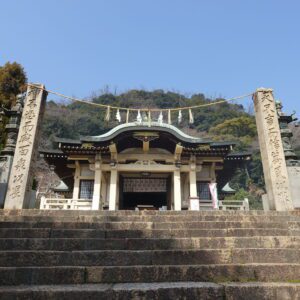
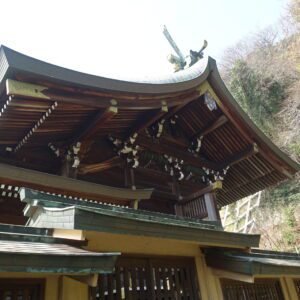
There is the Noh stage of the Azuchi-Momoyama period below the main shrine of Nunakuma Shrine. Originally located in Fushimi Castle, it is a prefabricated stage that Hideyoshi Toyotomi also used. This Noh stage was worshiped by the second shogun, Hidetada Tokugawa, by Katsushige Mizuno, the lord of Fukuyama Castle, and donated to Nunakuma Shrine. The assembled Noh stage is the only existing one in Japan. It is a national important cultural property. We cannot see the inside.

The second torii (Nino torii) built at the bottom of the precincts was donated by Katsushige Mizuno (later the second feudal lord, Katsutoshi Mizuno) in 1625. The tip of the Kasagi (top part of the upper cross-beam of a torii) is rounded and warped, and there is no other “Nino torii” with “Toribu-suma” at both ends of the Kasagi, which is the only Nunakuma Shrine in Japan. It is designated as an important cultural property of Hiroshima Prefecture.

If you walk about 5 minutes from Nunakuma Shrine, you will find Ankokuji Temple. Ankokuji Temple was founded in 1273 as Kinpoji Temple (predecessor of Ankokuji Temple) with Muhon Kakushin (Hoto Kokushi) as the founder. The Shakado and the wooden Amida Nyorai (Amitabha Tathagata) are national important cultural properties.
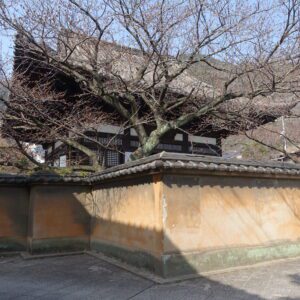

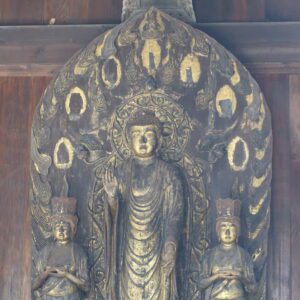
Admission: Adults Yen 150, College students Yen 100, Free for high school students and younger
4. Masuya Seiemon House, Ryoma’s hidden room
There is Masuya Seiemon house “Ryoma’s Hidden Room” a little less than 10 minutes on foot from Ankokuji Temple. Buildings of the Edo period remained on the street on the way, and it was fun to walk around.
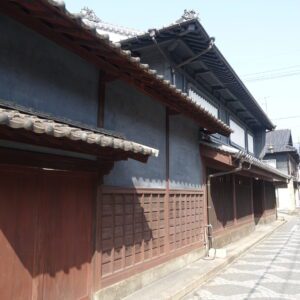

Ryoma Sakamoto and others who visited Tomonoura stayed at Masuya Seiemon’s house during the “Iroha Maru Incident”. It is said that Ryoma Sakamoto was hiding in the hidden space behind the ceiling of Masuya Seiemon house. Ryoma Sakamoto stayed in 1867, about seven months before he was killed in Kyoto.
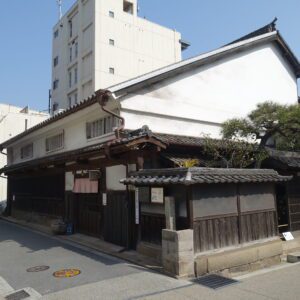

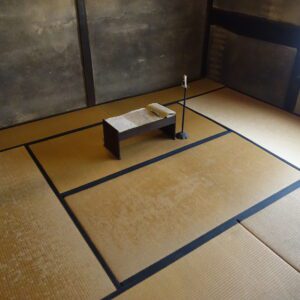
Admission fee: Yen 200 for adults, Yen 100 for elementary, middle and high school students
5. Fukuzenji Temple, Taichoro
“Fukuzenji Temple, Taichoro”, which is a 3-minute walk from “Ryoma’s Hidden Room”, is the highlight of Tomonoura sightseeing. “Fukuzenji Temple, Taichoro” is designated as a national historic site. Fukuzenji Temple is said to have been built as “Kannon-do” (Tendai sect) by Kuya Shonin around 950. Taichoro was built in 1694.
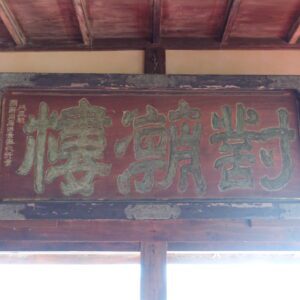
Taichoro was used as a guesthouse for the Joseon missions to Japan. The officer, Li Bangyan in the 8th Joseon missions in 1711 admired the view of Tomonoura seen from Taichoro as “Nitto Daiichi Keisho” ( It means the most scenic place in the world east of Korea). The one with this sentence on the forehead is listed in Taichoro. In addition, the view photograph from Taichoro was also used for the CD jacket of Shinji Tanimura’s “Good Day Departure (Cover of Momoe Yamaguchi)”.
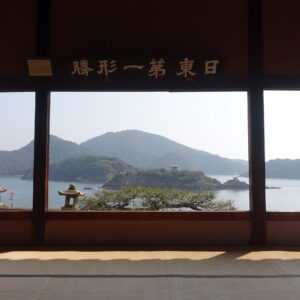
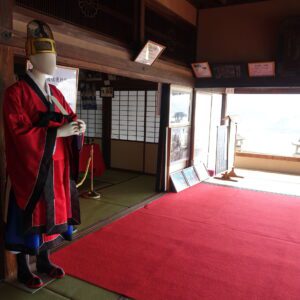
Fukuzenji Temple also became a forum for negotiations between the Kaientai by Ryoma Sakamoto and the Kishu Domain during the “Iroha Maru Incident.”
Admission fee: Yen 200 for adults, Yen 150 for junior high and high school students, Yen 100 for elementary school students
6. Bandaiji Temple, Abuto Kannon
Bandaiji Temple, Abuto Kannon is located about 4km away from Tomonoura. You can also go by bus, but since the number of bus is small, I went by rental cycle (Yen 500). It was quite difficult to ride a bicycle because I crossed a small mountain. It takes about 20-30 minutes by bicycle. After arriving, Bandaiji Temple, Abuto Kannon was a magnificent view, and there was the worth that had a hard time. If you are not confident in your physical fitness, it is better to take a bus or taxi.
観音-300x300.jpg)
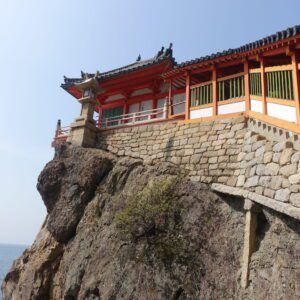
Bandaiji Temple was built in 992 by Emperor Kazan to enshrine the stone eleven-faced Kannon statue as the principal image and pray for the safety of the voyage in the vicinity. In 1185, it was damaged by the Genpei War. Kannon-do was founded by Terumoto Mori in 1570 and has been designated as a national important cultural property.
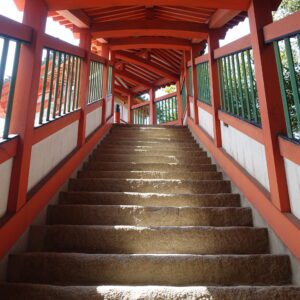
Kannon-do is often featured in paintings such as Ukiyo-e by Hiroshige Utagawa because of its beauty.
The floorboard of Kannon-do was tilted toward the sea and was in a very dangerous state. However, the view of the Seto Inland Sea seen from Kannon-do was superb. I would like everyone to visit Kannon-do.
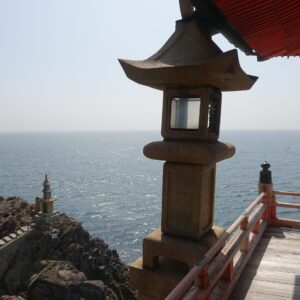
In addition, Bandaiji Temple is designated as an important cultural property of Hiroshima Prefecture. It is a Momoyama style Zen Buddhist architecture.

Admission: Yen 100 for junior high school students and above, Yen 50 for elementary school students
7. Myooin Temple
I enjoyed sightseeing in Tomonoura and Bandaiji Temple, Abuto Kannon, and headed to Myooin Temple by bus. The buses I used are as follows.
Depart Tomonoura Port at 11:18, Tomonoura Railway Bus bound for Fukuyama Station, arrive at Kusado Ohashi at 11:46, fare Yen 480
It takes about 15 minutes on foot along the Ashida River from the Kusado Ohashi bus stop to Myooin Temple.
Myooin Temple was founded by Kobo Daishi in 807 as Jofukuji Temple.
The main hall and five-storied pagoda of Myooin Temple are national treasures.
The main hall was built in 1321. It is considered to be a typical example of Setchu-yo (mixed architecture style between the Great Buddha style and Zen sect style to traditional Japanese style).
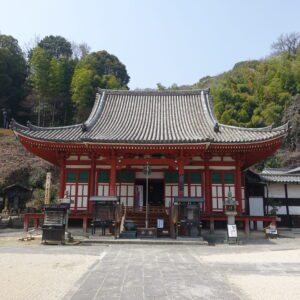
The five-storied pagoda is a pure Japanese style pagoda built in 1348. It is a very beautiful tower with a height of 29 meters. This five-storied pagoda is the fifth oldest pagoda in Japan. It is a tower that was built by donation of the people. The reason why many people’s donation were collected is that Kusado Sengen Town prospered as temple town of Myooin Temple.
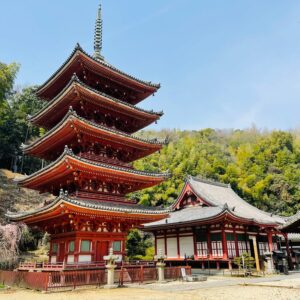
Kusado Sengen Town is a medieval archaeological site buried in the Ashida River. Relics excavated from the ruins are preserved and exhibited at the Hiroshima Prefectural Museum of History in Fukuyama City. The excavated relics are designated as national important cultural properties.
Temple gate, Temple study room, and Temple kitchen are important cultural properties designated by Hiroshima Prefecture.



Myoin is a temple with two national treasure buildings, but there were no other tourists at the time of my visit. It is a wonderful temple that I want many people to visit.
8. Kusado Inari Shrine
Kusado Inari Shrine is next to Myooin Temple. Kusado Inari Shrine is said to have been enshrined by Kukai in 807 as a guardian of Myooin Temple (at that time, Jofukuji Temple). Kusado Inari Shrine is called “Top 5 Japanese Inari Shrines in the Kyoto Fushimi Inari family”.

Originally, the main shrine of Kusado Inari Shrine was enshrined in the sandbar of the Ashida River. Katsusada Mizuno, the third lord of Fukuyama domain moved the shrine to the present location in 1655.
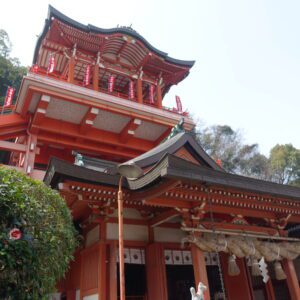
The current main shrine was relocated on a concrete structure at the end of the Showa period. You can enjoy a wonderful view from the main shrine.
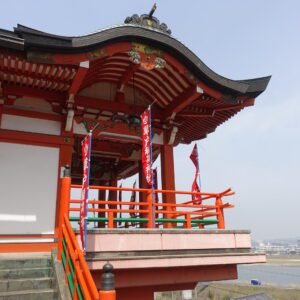
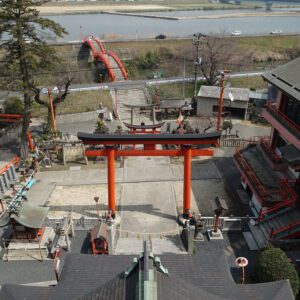
9. Ohashi family residence
I took a taxi from Kusado Inari Shrine to Fukuyama Station. It took about 10 minutes. It takes a little over 30 minutes to walk from Kusado Inari Shrine to Fukuyama Station. If you have time, you can walk.
I had lunch around Fukuyama station and headed to Kurashiki by train. The train I used is as follows.
Depart Fukuyama Station at 13:27, Sanyo Line “bound for Okayama”, arrive at Kurashiki Station at 14:09, fare Yen 770
After arriving at Kurashiki station, I went to the Ohashi family residence, which is about a 10-minute walk. The Ohashi family residence is located a little away from the “Kurashiki Bikan Historical Quarter”.
The Ohashi family residence was built between 1796 and 1799. It has a unique architectural style of Kurashiki such as roof tiles and Kurashiki lattice on the white wall. It is designated as a national important cultural property.
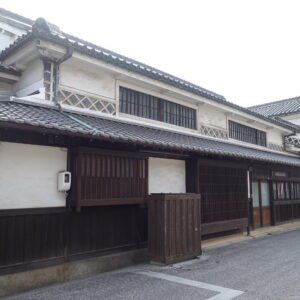
Admission fee: Adults Yen 550, elementary and junior high school students, 65 years old and over Yen 350
10. Ohara Museum of Art, Shin-Kojima-Kan (provisional name)
Next to the Ohashi family residence, I went to the “Kurashiki Bikan Historical Quarter”, which is a 2-3 minute walk away.
The Ohara Museum of Art Shin-Kojima-Kan (provisional name) is Kurashiki’s first full-scale Western-style building built in 1922. Originally it was the Daiichi Joint Bank Kurashiki Branch and the Chugoku Bank’s Kurashiki Hommachi Branch Office. It is a nationally registered tangible cultural property. Designed by Kazue Yakushiji, who designed the Ohara Museum of Art and Kurabo Central Hospital.
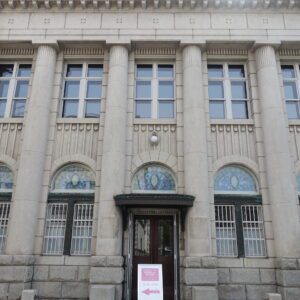
The Ohara Museum of Art Shin-Kojima-Kan (provisional name) was tentatively opened on October 1, 2021. It was open for free at the time of my visit. A huge sculpture by contemporary artist Kenji Yanobe, “Sun Sister (Rebirth)” is on display. “Sun Sister (Reverse)” stand up regularly.
1-300x300.jpg)
2-300x300.jpg)
11. Walk around Kurashiki Bikan Historical Quarter
“Kurashiki Bikan Historical Quarter” has been selected “National Preservation Districts for Groups of Traditional Buildings” as “Kurashiki City Kurashiki Riverside Traditional Buildings Preservation District”.
Kurashiki has a history of developing as a distribution center for Bicchu in the Tenryo of the Edo Shogunate (a territory under the direct control of the Shogunate). Ryotaro Shiba states in his book “Kaido wo Iku (Going on the Road)” that “Tenryo was originally chosen to have abundant land, and the tax was cheap.” The land of Tenryo has plenty of space for farmers, and it is thought that a rich culture has developed. In addition, the fact that the center of Kurashiki city was not bombed at all in World War II is also the reason why the “Kurashiki Bikan Historical Quarter” remained.
It was a lot of fun to walk around the cityscape of “Kurashiki Bikan Historical Quarter”.
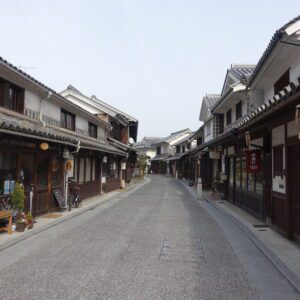
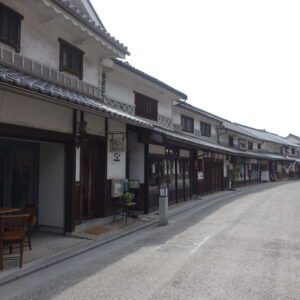
There is a “Kurashiki River Funa-nagashi” in the Kurashiki River in the “Kurashiki Bikan Historical Quarter”. Tickets are sold at the Kurashikikan Tourist Information Center for Yen 500 for adults and Yen 250 for children. The Yen 500 for adults was a great deal, and on the day I visited, the tickets were sold out around 15:00.

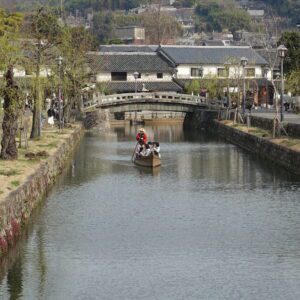
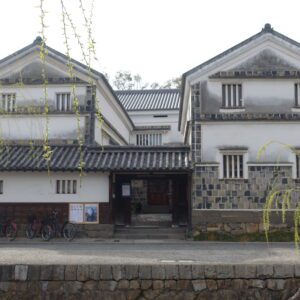
The Ohara Museum of Art is one of Japan’s leading museums. It is the first museum in Japan to display Western art and modern art. It opened in 1930. Unfortunately, I didn’t have time to enter the museum this time.
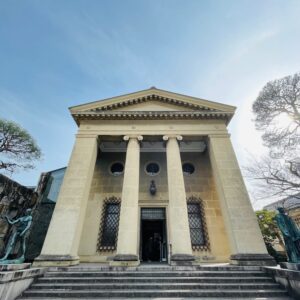
The Ohara Museum of Art Annex has been selected by DOCOMOMO (Documentation and Conservation of buildings, sites and neighborhoods of the Modern Movement) JAPAN as “Architecture of Modern Movements in Japan”.
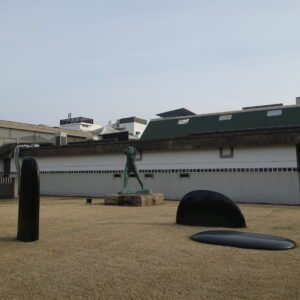
Shinkei-en was built in 1893 as the villa of Koshiro Ohara, the first president of Kurabo Industries. Admission is free.
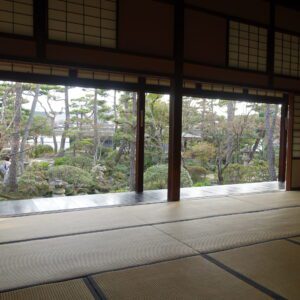
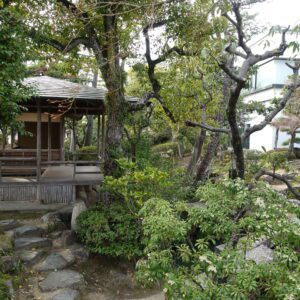
Kurashiki Ivy Square is a multicultural facility that has been redeveloped from the head office factory of Kurabo Industries , which was built in 1889. There are accommodations, restaurants and Kurabo Memorial Hall on the premises.
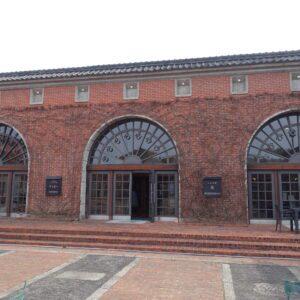

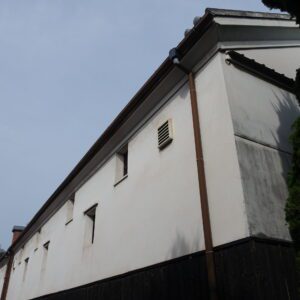
The Yumiko Igarashi Museum is right next to Kurashiki Ivy Square. Yumiko Igarashi is a manga artist famous for shojo manga such as “Candy Candy”. The “Yumiko Igarashi Museum” does not fit in with the scenery of the “Kurashiki Bikan Historical Quarter” at all, but it is not so noticeable due to the fence of Kurashiki Ivy Square.
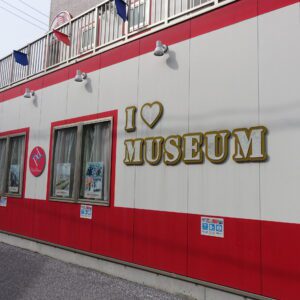
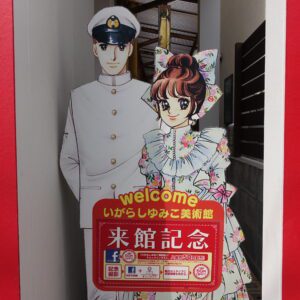
Admission: Yen 600 for adults, Yen 400 for students (high / middle), Yen 300 for children
12. Former Ohara’s house, Yurinso
The former Ohara family residence was built in the late Edo period (late 1700s). There are typical features of Kurashiki such as the Kurashiki lattice on the first floor, the Kurashiki window on the second floor, and the Namako-Kabe ( a wall covered with square tiles jointed with raised plaster).
Previously, the owner of the Ohara family lived and the inside was not open to the public, but in April 2018, it was opened to the public as “Talking Theater Ohara Main House”. As the name of “Talking Theater” suggests, the staff explain various things carefully when you are observing the inside.


There is also a book cafe at “Talking Theater Ohara Main House”, which was a very relaxing tour.
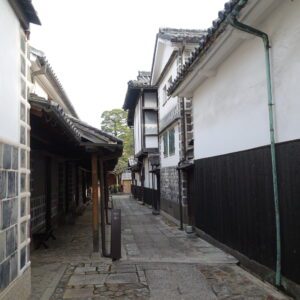
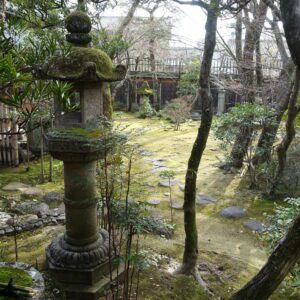
The former Ohara residence is a national important cultural property.
Admission fee: Yen 500 for adults, Yen 400 for high school students and younger
Yurinso is an old villa of the Ohara family built in 1928 by Magosaburo Ohara to live with his family. The building features a green tiled roof. Roof tiles baked by a unique manufacturing method glow green depending on the viewing angle. The contrast between the shade of green tiles and the earth-colored fence is also wonderful. It was also used as a lodging facility for Emperor Showa in 1947. The interior is open to the public at the time of a special exhibition sponsored by the Ohara Museum of Art, once a year in spring and autumn.
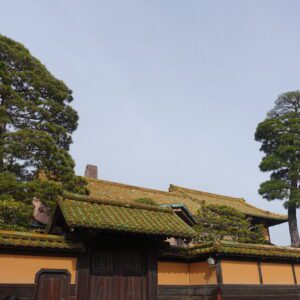
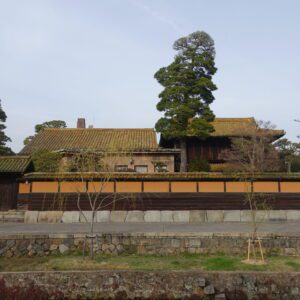
After enjoying sightseeing in the “Kurashiki Bikan Historical Quarter” and having dinner, I headed to Okayama Airport by bus and returned to Tokyo by plane. The public transportation I used is as follows.
Depart Kurashiki Station North Exit at 18:25, Limousine Bus “bound for Okayama Momotaro Airport”, arrive at Okayama Momotaro Airport at 19:00, fare Yen 1,150
Depart Okayama Momotaro Airport at 20:00, ANA660, arrive at Haneda Airport at 21:20
The number of tourist spots I visited on March 25 was the largest number of tourist spots I visited in a day. In addition to the two “National Preservation Districts for Groups of Traditional Buildings”, I was able to visit many tourist attractions such as national treasures and national important cultural properties.
Note: The departure / arrival times, fares of transportation, admission fees, meal fees, etc. listed in the text are as of the time of writing the BLOG. Please check for yourself when you go on a trip as it may change in the future.
